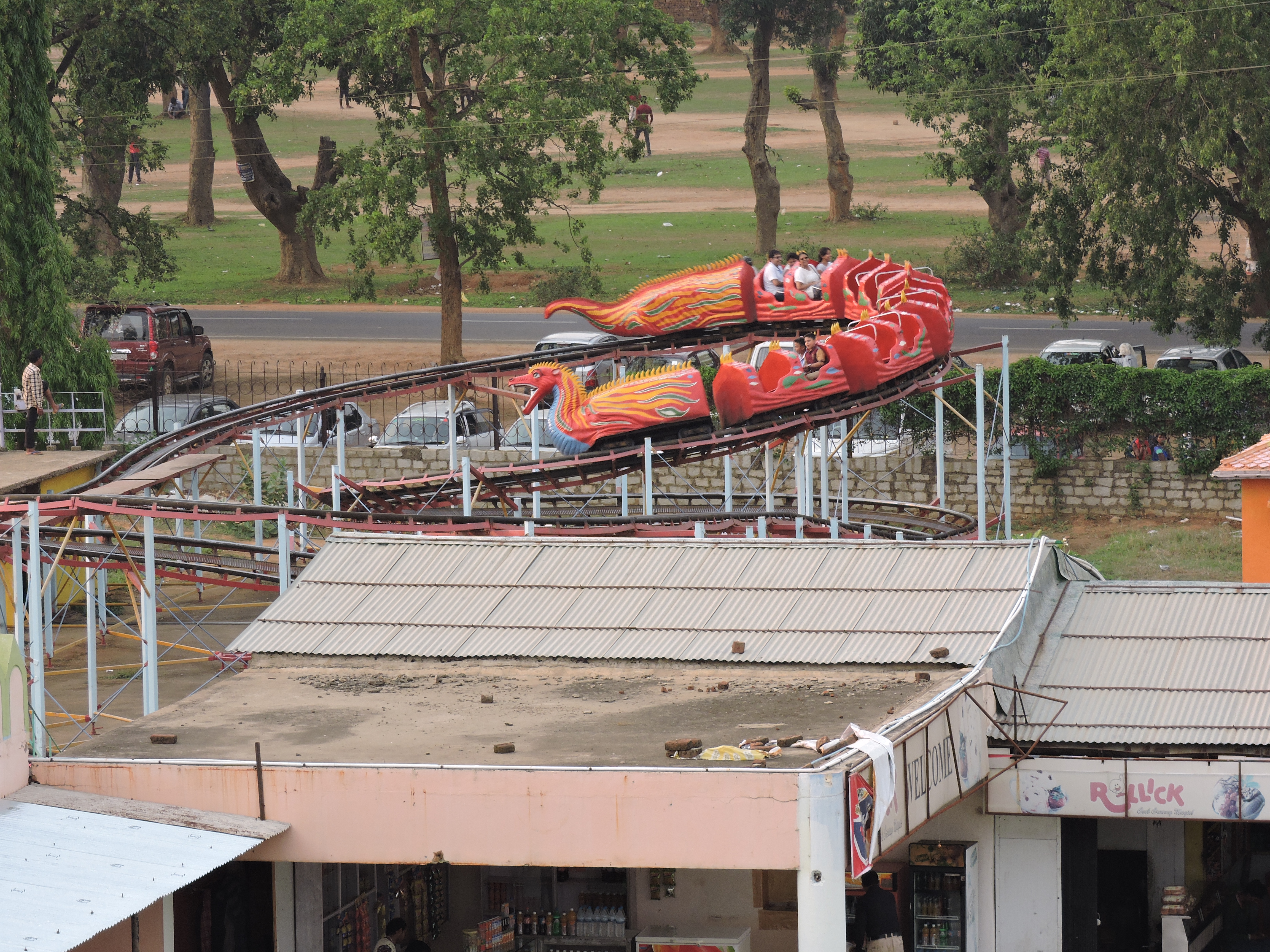| Revision as of 04:36, 18 June 2003 editArteitle (talk | contribs)Extended confirmed users, Pending changes reviewers2,724 edits added mention of current recordholder; a few link adjustments← Previous edit | Revision as of 16:57, 3 August 2003 edit undoSaltine (talk | contribs)16,408 edits added linkNext edit → | ||
| Line 16: | Line 16: | ||
| == External Links == | == External Links == | ||
| * | * | ||
| * | |||
Revision as of 16:57, 3 August 2003
The roller coaster is arguably the most popular thrill ride to ever have been developed for amusement parks and modern theme parks. It consists of a track that rises and falls in specially designed patterns, sometimes with one or more loops that allow the rider to briefly be upside down, and cars for e.g. two or four passengers each.
The cars are not powered, they are pulled up to the peak of the coaster track's first incline, then convert potential energy into kinetic energy as they race down the first downward slope. Subsequently kinetic energy is converted back to potential energy while it moves up again to the second peak. This is necessarily lower as some energy is lost due to friction. Then it goes down again, etc. A properly designed roller coaster will have enough kinetic, or moving, energy to complete the entire course until brakes bring the coaster car to a complete stop. L.A. Thompson patented the roller coaster on January 20, 1885.
All passengers, using modern safety technology, must be secured safely into the roller coaster car. Roller coasters in all parks are subject to stringent safety precautions and inspections.
The first prototype roller coasters were based on gravity switchback trains developed in the 1880s. These primitive coasters were run to provide amusement by railroad companies on weekends when ridership was lower. By 1912, the first underfriction coaster was developed by John Miller, often called the Thomas Edison of roller coasters. Soon, roller coasters spread to amusement parks all around the United States and the rest of the world. Perhaps the most famous historical roller coaster, the Cyclone, was opened at Steeplechase Park at Coney Island in Brooklyn, New York in 1927. Like the Cyclone, all early roller coasters were made of wood. Many old wooden roller coasters are still operational, at parks such as Kennywood in Pittsburgh, Pennsylvania.
The Great Depression marked the end of the first golden age of roller coasters. Theme parks in general went into a decline that lasted until 1972, when the Racer was built at Kings Island in Cincinnati, Ohio. Designed by John Allen, the instant success of the Racer began the second golden age that is still happenning today.
In 1959, the recently-opened Disneyland theme park introduced a new design breakthrough in roller coasters: the steel coaster. The first of these steel coasters was the Matterhorn, which allowed for more dramatic loops, corkscrew turns, and also a much safer ride. Most modern roller coasters are made of steel but many parks also have a few wooden roller coasters as well. In 1992, the first inverted track roller coaster opened at Six Flags Great America in Gurnee, Illinois. As of 2003, the roller coaster holding the records for greatest speed and height is Top Thrill Dragster at Cedar Point in Sandusky, Ohio, with a top speed of 120 mph and a 420 foot vertical hill. New roller coaster designs and state of the art technology help push the physical limits on what type of experiences can be had on the newest coasters.
